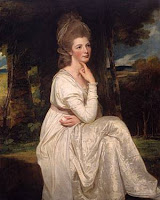The following is written by guest blogger Adria Rice. Adria is the new operations manager for Madison Opera. She recently graduated from Northwestern University with a degree in vocal performance and English.
In The Marriage of Figaro, Mozart’s music and Da Ponte’s lyrics create a scenario in which the upper class and the lower class scheme with and against each other. The Count Almaviva attempts to use his status and power to exercise his “feudal right” and take his wife’s chambermaid, Susanna, to bed before her marriage to Figaro (the Count’s personal valet). Susanna, a trusted friend of the Countess, reveals her wit and cunning as she and the Countess concoct a plan to expose the Count and reprimand him for his lecherous behavior. The plan to trick the Count begins when Susanna tells the Count that she will come to the assignation in the woods. But the woman he woos in the woods will not be Susanna, but his wife, the Countess, dressed as Susanna.
By Act III, Scene 8, the Countess is waiting for Susanna to arrive with an update concerning their plan to trick the Count. In the recitative before the Countess’s Act III aria Dove sono, the Countess wavers, wanting to go ahead with the plan, but fearing to punish her husband publically: “The plan seems to me a little rash, and against such a quick and jealous husband! But what harm is there in it?” In her public life she is a strong noblewoman, but in private she is a despondent wife forced to seek refuge in the cunning of her friend and maid, Susanna. The Countess sings, “First loved, then insulted, and at last betrayed, you [The Count] force me to seek help from one of my maids!” Her recitative is very dramatic, and her anger at her husband builds throughout the recitative, culminating toward the end with an A above the staff on her last phrase.
In the aria Dove sono, The Countess laments her broken heart and her husband’s wandering affections. Dove sono is challenging because it has long legato phrases that require skilled breath control. Great vocal technique is imperative in order to sing it successfully. If sung improperly, a Mozart aria will quickly reveal flaws and imperfections, but if sung with good technique it will reveal all the beautiful qualities and textures of the voice. Arguably, Mozart gave his most difficult and most lyrical music in The Marriage of Figaro to The Countess, and we know Madison Opera audiences are in for a treat with soprano Melody Moore’s interpretation.
Listen to the great Renée Fleming sing the Countess’s Act III recitative and aria, Dove sono, and follow along with the English translation:
Aria:
Where are the lovely moments
Of sweetness and pleasure?
Where have the promises gone
That came from those lying lips?
Why, if all is changed for me
Into tears and pain,
Has the memory of that goodness
Not vanished from my breast?
Ah! if only, at least, my faithfulness,
Which still loves amidst its suffering,
Could bring me the hope
Of changing that ungrateful heart!





























0 comments on “Aria Focus: Dove Sono”